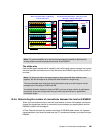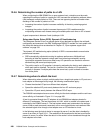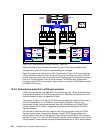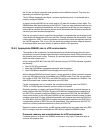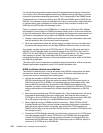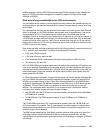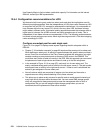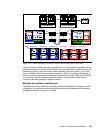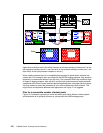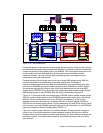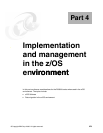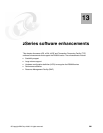274 DS8000 Series: Concepts and Architecture
Use Capacity Magic to find out about usable disk capacity. For information on this internal
IBM tool, contact your IBM representative.
12.5.4 Configuration recommendations for z/OS
We discuss briefly how to group ranks into extent pools and what the implications are with
different grouping approaches. Note the independence of LSSs from ranks. Because an LSS
is congruent with a z/OS LCU, we need to understand the implications. It is now possible to
have volumes within the very same LCU, which is the very same LSS, but these volumes
might reside in different ranks. A horizontal pooling approach assumes that volumes within a
logical pool of volumes, like all DB2 volumes, are evenly spread across all ranks. This is
independent of how these volumes are represented in LCUs. The following sections assume
horizontal volume pooling across ranks, which might be congruent with LCUs when mapping
ranks accordingly to LSSs.
Configure one extent pool for each single rank
Figure 12-12 on page 270 displays some aspects regarding the disk subsystem within a
DS8100:
Chapter 5, “Virtualization concepts” on page 83 introduced the construct of an extent pool.
When defining an extent pool, an affinity is created between this specific extent pool and a
server. Due to the virtualization of the Fibre Channel switched disk subsystem you might
consider creating as many extent pools as there are RAID ranks in the DS8000. This
would then work similar to what is currently in the ESS. With this approach you can control
the placement of each single volume and where it ends up in the disk subsystem.
In the example in Figure 12-12 on page 270, each rank is in its own extent pool. The
evenly numbered extent pools have an affinity to the left server, server 0. The odd number
extent pools have an affinity to the right server, server 1. When a rank is subdivided into
extents it gets assigned to its own extent pool.
Now all volumes which are comprised of extents out of an extent pool have also a
respective server affinity when scheduling I/Os to these volumes.
This allows you to place certain volumes in specific ranks to avoid potential clustering of
many high activity volumes within the same rank. You can create SMS storage groups
which are congruent to these extent pools to ease the management effort of such a
configuration. But you can still assign multiple storage groups when you are not
concerned about the placement of less active volumes.




